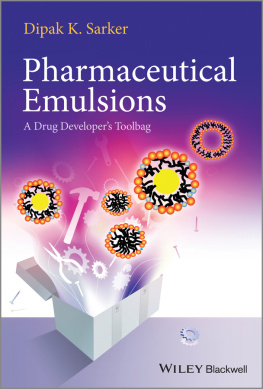1.1 Introduction
This chapter presents the health care system in Australia, the regulation and funding of medicines, the medicine supply chain, and the successive medicine pricing policies that have been implemented over the last two decades. We include an analysis of the impact of these policies on prices of pharmaceuticals in Australia compared to prices in other similar countries.
1.2 The Australian Health Care System
Australia is the worlds sixth largest country with a population in 2014 of 23 million. Most Australians enjoy high-quality health-care. In 2010, life expectancy at birth was 81.8 years, the fifth highest among countries of the Organisation for Economic Co-operation and Development (Organisation for Economic Co-operation and Development (OECD) ).
The health-care system comprises a complex mix of public and private funding. Australia is a federation of six states and two territories. Constitutionally, health care is the responsibility of the states. However, much of the funding is supplied by the Commonwealth (federal) government. There is interdependence and overlap of health policy and health-care service responsibilities between the Commonwealth government and the states. State governments administer public hospitals, which comprise the largest single component of health care expenditure. But the majority of the funding for the public hospital system comes from the federal government through an agreement with each state and territory that stipulates provision to all Australians of timely access to quality health services based on their needs, not ability to pay, regardless of where they live in the country (Council of Australian Governments ).
Total health spending in 20112012 accounted for 9.5 % of GDP, positioning Australia close to the median within the OECD group of countries. In 2011, Australia spent a similar proportion of GDP on health as Spain and the United Kingdom, a higher proportion than Sweden, Norway and Ireland, and a lower proportion than New Zealand, Canada and France (Australian Institute of Health and Welfare ).
Notwithstanding federalism, it is the Commonwealth government that sets the direction in most areas of health policy (Fenna ). The Commonwealth directly operates two national subsidy schemes under the umbrella of Medicare. The first, the Medicare Benefits Scheme (MBS) subsidises payments for services provided by private doctors, optometrists and, in some circumstances, other health professionals. The second national subsidy scheme under Medicare is the Pharmaceutical Benefits Scheme (PBS) (with the Repatriation Pharmaceutical Benefits Scheme (RPBS)) as further explained below.
1.3 Regulation and Funding of Medicines
The National Medicines Policy provides the overarching framework for the regulation and funding of medicines in Australia (Australian Government, Department of Health ).
Responsibility for most aspects of regulation in the pharmaceutical sector rests with the Commonwealth. The Therapeutic Goods Administration (TGA), an agency under the Department of Health, has responsibility for regulating the medicines that are marketed in Australia and has the remit to ensure acceptable quality, safety and efficacy of medicines (Australian Government, Department of Industry ).
1.3.1 The Australian Pharmaceutical Benefits Scheme
The PBS is designed to provide timely and affordable access to necessary and lifesaving medicines at an affordable price that both the individual and community can afford. Medicine subsidisation first started in Australia with the establishment of the Repatriation Pharmaceutical Benefits Scheme in 1919, a scheme which provided pharmaceuticals free of charge to veterans. In 1944, the Pharmaceutical Benefits Act passed authorizing provision of pharmaceuticals free of charge to all residents of Australia. However, the scheme itself was not established until 1948, when a list of 139 life-saving and disease preventing drugs were provided free of charge. In 20122013, the PBS subsidised around 750 medicines available in more than 1,970 forms and marketed as more than 4,500 differently branded items (Australian Government, Department of Health and Ageing ).
The centralised features of the program make it possible to generate detailed statistics on subsidised prescriptions. In 20122013, PBS government expenditure was $9 billion). During the first full financial year of the collection (July 2012 to June 2013), approximately 62 million under co-payment prescriptions representing 22.7 % of total PBS/RPBS prescriptions were processed.
1.3.2 Contribution of Patients
The cost to both general and concessional consumers of PBS-listed medicines is subsidised if prescribed for approved conditions and the product is priced above the level of the co-payment. In 2014 the general co-payment was $36.90 for general beneficiaries and $6.00 for concessional patients. Safety net thresholds provide protection against very high costs within a calendar year. The safety net thresholds apply at the family level, not the individual, and were $1,421.20 for general beneficiaries and $360 for concessional patients in 2014. Co-payments and safety net thresholds are adjusted annually in line with the consumer price index (Australian Government, Department of Health ).







